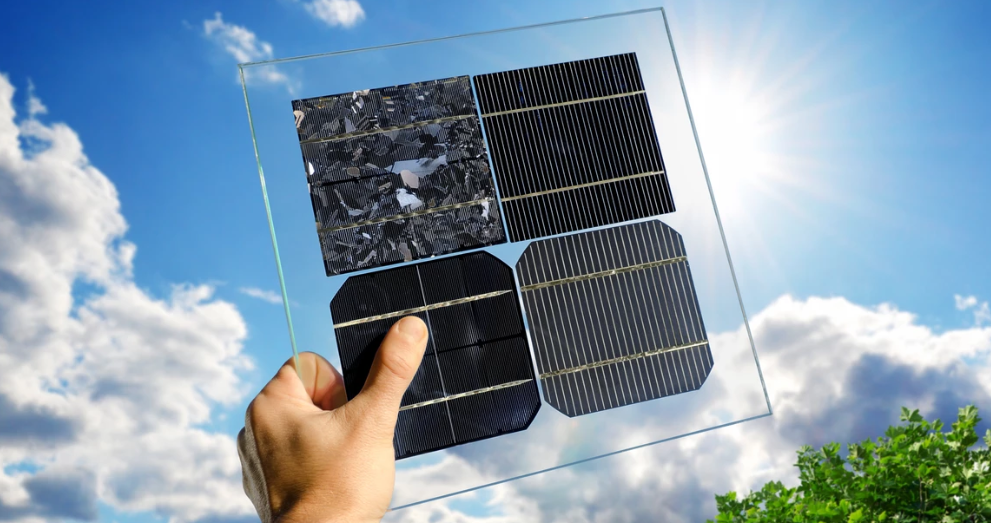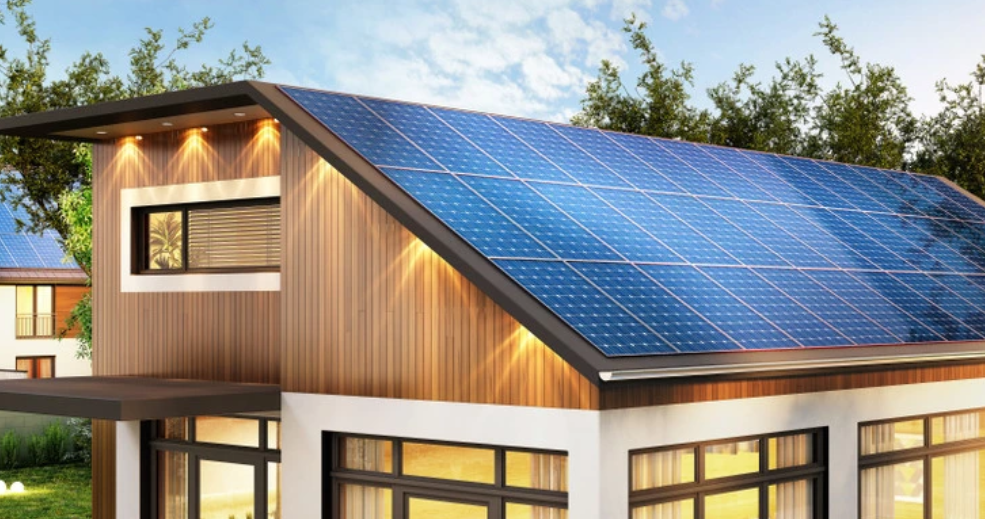Guide
Everything about the efficiency of solar cells

Various materials and technologies are used in the manufacture of solar cells. They determine the level of efficiency achieved by the finished solar modules. Here you can find out exactly what efficiency means and which module types perform best in comparison.
In photovoltaics (PV), solar cells convert light energy into electrical energy. Different types of solar cells differ mainly in terms of the semiconductor material used and their structure. Material and structure influence the efficiency of the solar cells and, thus, the module’s performance.
Different efficiencies for different types of solar cells
The efficiency of a solar cell describes what percentage of the solar radiation falling on the cell is converted into electricity. The higher the efficiency, the more efficiently a solar cell works.
Modules with mono- and polycrystalline solar cells are mainly used in practice. The latter is mainly on existing systems; they are hardly ever installed new. Monocrystalline solar cells are comparatively more expensive because production is more complex. However, they have a uniform structure and a high level of efficiency.
With polycrystalline solar cells, the efficiency is lower; On the other hand, polycrystalline solar cells are less expensive to produce, which makes them cheaper. This was the decisive advantage for a long time, but in the meantime, the market has changed so much that polycrystalline solar cells are hardly ever produced, and the price argument is therefore void.
The efficiency of amorphous or inorganic solar cells is even lower than that of polycrystalline cells. This designation is used for cells that are primarily made of non-crystalline silicon. Their production is very simple in comparison, which is why they are particularly inexpensive. The thin-film modules produced from this are mainly used where inexpensive modules (low investment costs) are important and where there is sufficient space, such as in solar parks.
Inorganic solar cells also include cells made from semiconductor compounds such as gallium arsenide (GaAs), cadmium telluride (CdTe), copper indium gallium diselenide (CIGS) or copper indium disulphide (CIS). These cells often have high efficiencies of 20 to 40% and are mainly used for special applications due to the higher manufacturing costs. The toxicity of some metals used is also unfavourable for mass use.
There are also thin-film cells made from organic compounds. Solar modules made from organic solar cells can take many different forms. For example, be designed as transparent flexible foils. The level of efficiency is currently still comparatively low. Still, organic solar cells deliver a relatively large amount of electricity even when the incidence of light is weak or inconsistent. A major advantage of organic solar cells is that they can be manufactured tailor-made – organic chemistry offers a wide range of compounds from which the right combination for the respective application can be selected.
Ways to increase efficiency
The aim of current research and development in the industry is to increase the efficiency of solar panels further and, thus, the modules’ performance. The introduction of PERC technology has increased performance in the modules manufactured in industrial production. Still, the solar cells’ efficiency can only be increased by around 1 per cent through rear-side passivation.
The tandem or hybrid solar cells that are still being developed rely on combining different photoactive layers, which means that several areas of the sunlight spectrum can be used to generate electricity. Very high efficiencies have already been achieved in laboratory tests.
So-called perovskite solar cells are also being researched, which take their name from a typical metal oxide crystal structure (CaTiO₃). Their main advantage lies in the cheap manufacturing process and high efficiency, as the cells convert green and blue light into electricity. Efficiencies of 20 per cent and more are currently being achieved. In addition, perovskite solar cells can be excellently combined with other materials to form tandem solar cells. Even if there are still some practical questions to be solved, a great future is predicted for the cell type.
A comparison of the efficiencies of solar cell types
The following table lists the currently expected efficiencies of various types of solar cells:
| Solar cell type | Efficiency |
| Monocrystalline solar cell | 16-24% |
| Polycrystalline solar cell | 14-20% |
| Amorphous thin film solar cell | 10-14% |
| Organic thin-film solar cell | Approx.10% |
| Tandem or hybrid solar cells | More than 40% |
The specified efficiency values refer to laboratory conditions. The efficiencies of solar cells used in specific photovoltaic systems can be lower.
The efficiency of a solar module

Although solar modules comprise solar cells, their efficiency depends not only on the solar cells. The module efficiency is determined by the type of solar cells installed. In addition to the solar cells, other elements installed in the modules (e.g. the anti-reflection layer used and the connectors) influence the overall efficiency, as well as the specific wiring of the solar cells.
Solar modules and efficiencies: a list of the best
The efficiency and, thus, the performance is an important criteria for most interested parties when choosing the best portable solar panel for a system. Mono- and polycrystalline solar modules have been installed most frequently, as they work very efficiently. However, using thin-film solar modules can be particularly worthwhile in certain cases.
The efficiencies of common module types in descending order:
- Monocrystalline solar modules achieve the best levels of efficiency with values of 14 to 22%. They are mainly used for smaller roof areas: high solar power yields can be achieved even with a comparatively small module area.
- Polycrystalline solar modules achieve slightly lower efficiencies of 10 to 18% and are more suitable for larger roof areas.
- Thin-film modules have the lowest efficiency at 6 to 10%. Still, they can utilize diffuse light better than crystalline modules, which makes them particularly interesting for non-south-facing roof areas and other special application scenarios.
A further increase can be achieved using newer technologies such as PERC or current half-cell technology.
Here you will find an overview of particularly efficient modules, but the figures are from 2018.
Efficiency, rated power and actual power
In the product data sheet, manufacturers usually state the nominal power of a solar module in watt peak (Wp) or kilowatt peak (kWp). The nominal power correlates with efficiency. Particularly powerful modules have a high degree of efficiency – and vice versa.
Compared to the datasheet information, e.g. The following factors determine the actual performance or the efficiency of PV modules in operation:
- The orientation and inclination of the modules
- The radiation intensity
- Any shading
- The air quality
- The light spectrum
- The ambient temperature
The higher the solar radiation, the better values are achieved. With temperature, it is exactly the opposite: the warmer it gets, the more the performance of the solar cells or solar modules decreases. However, the losses can be limited thanks to the good ventilation of the photovoltaic modules.
When it comes to the efficiency of the entire photovoltaic system and its yield, the power inverter plays a crucial role. Most energy is “lost” when converting direct current into alternating current (and back at the storage facility).
The module efficiency can only be one selection criterion
Anyone interested in purchasing a photovoltaic system should not only focus on the efficiency of the modules. In general, an individual solar module’s efficiency is always higher than a photovoltaic system’s overall efficiency. The losses of all individual components are included in the calculation of the latter.
For example, the length and cross-section of the connecting cables between the components influence the efficiency of the PV system. The inverter used in the solar system also influences the overall efficiency.
In addition to the efficiency of the solar modules and other system components, buyers should generally also include the costs of the solar modules and the manufacturer’s guarantees in the purchase decision.


















